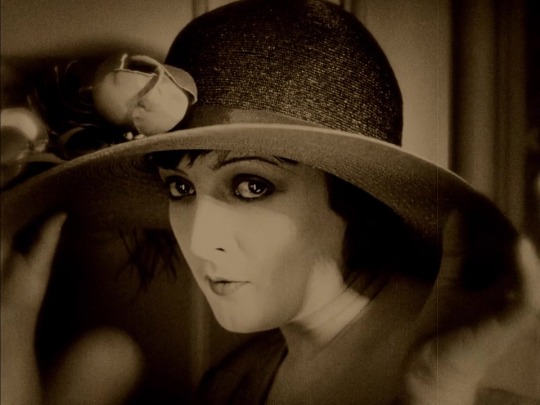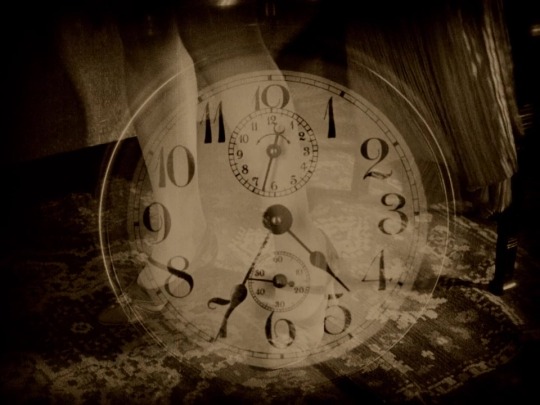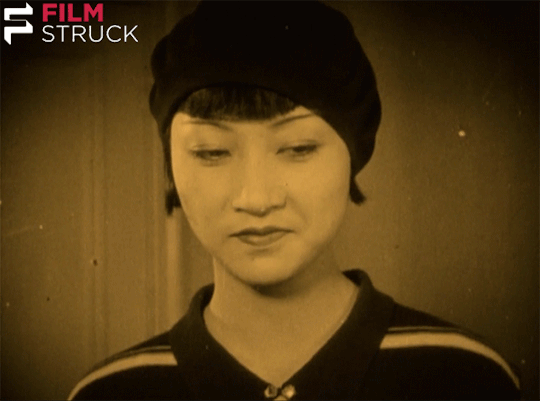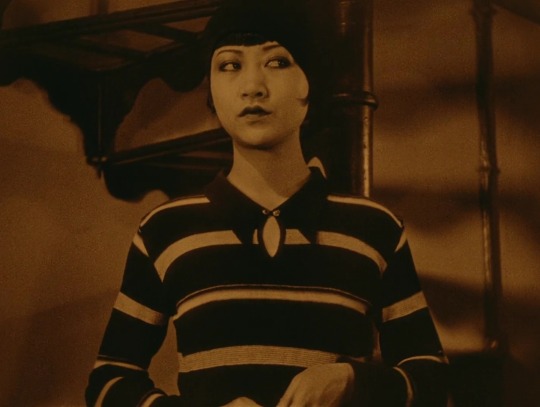#Ewald Andre Dupont
Photo


Varieté , 1925, Ewald André Dupont.
9 notes
·
View notes
Text

Anna Sten and Anton Walbrook in Salto Mortale (Germany, Ewald André Dupont, 1931). From the Taussig film stills collection
View on WordPress
#1930s#acrobatics#acrobats#anna sten#Anton Walbrook#ewald andre dupont#film still#matching costume#Salto Mortale
45 notes
·
View notes
Photo

The Neanderthal Man
Ewald Andre Dupont
USA, 1953
34 notes
·
View notes
Audio
Half man... half beast... all b-movie! It's THE NEANDERTHAL MAN (1953) from director E.A. Dupont and producers Aubrey Wisberg and Jack Pollexfen! There's a lot of yikes ahead, so prepare yourselves Creatures of the Night...
Starring Robert Shayne, Joyce Terry, Richard Crane, Doris Merrick and Beverly Garland, this independent sci-fi horror film gives your deadicated hosts much to discuss!
Context setting 00:00; Synopsis 15:14; Discussion 46:36; Ranking 1:14:43
#podcast#the neanderthal man#king kong#science fiction#evolution#horror#classic horror#b movie#independent film#aubrey wisberg#jack pollexfen#robert shayne#joyce terry#richard crane#doris merrick#beverly garland#e a dupont#ewald andre dupont#albert glasser#stanley cortez
23 notes
·
View notes
Photo

365 Day Movie Challenge (2018) - #254: Piccadilly (1929) - dir. Ewald André Dupont
I first saw the showbiz drama Piccadilly on TCM many years ago, but when I saw that that same channel was showing the film again last night, I knew that it was high time for me to see it again with fresh eyes. As a longtime fan of Anna May Wong (1905-1961), Hollywood’s first Chinese-American movie star, I wanted to see how her role in Piccadilly as Shosho, the ambitious dishwasher who transforms into a dancer who becomes the toast of London, held up with her most stirring lead performance, as the tragic heroine of the Madama Butterfly remake The Toll of the Sea (1922).
Photographed beautifully by Werner Brandes, Anna May Wong is glorious in Piccadilly, taking full advantage of her chance to be presented as a character who is not a sweet, innocent naïf. Dupont’s film projects Wong as a sex symbol, but not as the usual “dragon lady” stereotype that we would expect from a film made in its era. Shosho wants a taste of the good life, the same luxuries afforded to white female dancing idols like Mabel Greenfield (Gilda Gray), whose place Shosho usurps in the Piccadilly nightclub where they are both employed. Shosho also gains the affections of the club owner, Valentine Wilmot (Jameson Thomas), who happens to be Mabel’s boyfriend. Although director E.A. Dupont was challenged by British censors, who wanted to cut the kiss depicted between Shosho and Valentine in one scene due to existing anti-miscegenation laws in the UK, the lip lock can still be seen for a brief moment. It is a testament to artists who were willing to break boundaries in a prejudiced culture.
Dupont didn’t shy away from incorporating conversations about racism and bigotry in his film. There is a scene in which Shosho and Valentine visit a bar in London’s Limehouse district, where the patrons are of a distinctly lower class than the people who frequent Valentine’s upscale establishment. We see a white woman choose to dance with a black man, ignoring social conventions in pursuit of their shared pleasure. Unsurprisingly, the bar’s white management soon breaks the couple up, forcing the man to leave and shaming the woman for her choices - not only for dancing with someone outside of her race, but for being a prostitute. As this interaction unfolds, Shosho keeps her back turned to the argument; although her reaction is never explicitly discussed in dialogue, obviously she is affected by the racist outburst happening in front of her.
The film also includes a Chinese-British boyfriend for Shosho, Jim (King Hou Chang), who exhibits a certain degree of contempt for Valentine; it’s unusual to see a film from the late 1920s in which a character who is a minority is able to so freely express his disdain for a white man. Race and class are the constant concerns of the main characters in Piccadilly, and though the film ends up utilizing some overused and rather disappointing tropes for its third act, it deserves credit for shining a spotlight on the incandescent and unique Anna May Wong, who ought to have enjoyed a much bigger and better career than what she ultimately had.
#365 day movie challenge 2018#piccadilly#1929#1920s#20s#ewald andré dupont#ewald andre dupont#e.a. dupont#ea dupont#anna may wong#gilda gray#jameson thomas#king hou chang#werner brandes
3 notes
·
View notes
Photo

Style to Burn: Featuring Anna May Wong by R. Emmet Sweeney
The career of Anna May Wong is defined by what was denied her. Passed over for leading roles in favor of white actors, most egregiously for THE GOOD EARTH (’37), she was instead shunted into stereotyped “dragon lady” supporting parts for the majority of her working life. And yet her image endures despite it all, for she could imbue even the most clichéd character with a calculated cool to rival Marlene Dietrich, as she did so memorably in SHANGHAI EXPRESS (’32). FilmStruck has gathered seven disparate titles in its “Featuring Anna May Wong” theme, from which I will focus on two that spanned her career – PICCADILLY (’29) and IMPACT (’49).
Anna May Wong was born as Huang Liu Tsong on January 3, 1905 at 351 Flower Street, close to Los Angeles’ Chinatown district. Her family were third generation immigrants – both sets of Anna May’s grandparents had arrived in California by 1855. Her father Wong Sam Sing operated a laundromat, the Sam Kee Laundry, which all the children, including Anna May, worked at in some capacity. According to ANNA MAY WONG: FROM LAUNDRYMAN’S DAUGHTER TO HOLLYWOOD LEGEND, by Graham Russell Gao Hodges, Anna May first became interested in movies at the age of nine, when she used a tip from a laundry delivery to go to the cinema. After that she would often sneak out of school to go to movies, forging excuse notes for her teachers. She became especially obsessed with THE PERILS OF PAULINE (’14) serial, in which Pearl White would perform spectacular stunts to evade capture.

Anna May’s first appearance on film was as an extra in THE RED LANTERN (1919), a Chinese-themed drama starring Alla Nazimova. She remembered not having any fear the first day on set, “because I had acted in front of myself every day…so when I acted, it was a wonderful feeling, as though I was just playing myself.” Her first big break was getting cast in the lead for THE TOLL OF THE SEA (’22) at the age of 17, a Madame Butterfly adaptation written by Frances Marion that was one of the first two-color Technicolor features. This then led to one of her most famous early performances: a Mongol courtesan/spy in THE THIEF OF BAGDAD (’24). For the next four years she would only receive supporting parts, never a lead. This was in part due to the strictly enforced policy against showing mixed-race romances on-screen – Anna May could not be seen kissing a white man.
So, she was eager to break out from Hollywood and gladly signed a contract with German producer/director Richard Eichberg, who took her on a European tour. This led to the E.A. Dupont production PICCADILLY, where Wong plays a dishwasher who is discovered by the manager twirling in the washroom. She is hired to dance as an opening act and quickly becomes a star. This causes some serious jealousy from the show’s supposed leading lady Mabel (Gilda Gray), especially when Wong flirts with the manager Valentine (Jameson Thomas). Thus, occurs the requisite deception, intrigue and murder. It is directed by Ewald Andre Dupont with great flair and experimentation. He puts the camera everywhere, from hopping a train to a POV shot from inside Wong’s eye and even shot-reverse shot sequences are an event, with long panning shots building anticipation between each reaction. Even when the melodrama becomes predictable, Dupont is not. And Wong shines brightly in the role of Shosho, aided by some remarkable costumes (the designer is uncredited) – the one that makes her a star is a “Chinese” themed outfit that makes her look like a stylish and sleek pagoda. It would be ridiculous on most other actors but Wong could make just about anything look good. It is not simply that dresses sit well on her, but the attitude she expresses through each outfit. It is something to do with absolute control – she adapts to each piece of clothing and positions it as a weapon. She is her own distancing effect, daring you to approach – she is like a more dangerous Louise Brooks.
The Shosho character is very aware of these gifts, telling Valentine early on that "I danced once before in Limehouse but there was trouble, men, knives....” But she doesn’t care, because the knives don’t get turned on her, just between the men. The difference in PICCADILLY is that it is Mabel who is the destabilizing force, desperately in love with Valentine and watching him melt for Shosho, who is using him for kicks (sadly a kiss between Shosho and Valentine was cut out of the film to please U.S. censors – Wong could never truly get away from her country’s racism).
Wong could have made a career out of roles like these, but it wasn’t meant to be. She eventually returned to Hollywood, and back to the same stereotyped supporting parts. When THE GOOD EARTH came along, she was desperate for the part – which was given to Luise Rainer (who was white). Rainer would go on to win a Best Actress Oscar. Frustrated and angry, she finally stopped working after LADY FROM CHUNGKING in 1942.

She returned for a small part in the film noir IMPACT (’49), presumably to help pay the bills. It is a bit part as a maid named Su Lin, who is unwittingly enmeshed in a murder plot. She works for Walter Williams (Brian Donlevy) and his wife Irene (Helen Walker). Irene is having an affair with Jim Torrence (Tony Barrett), and they are plotting to kill Walter and take his sizable income. Su Lin overhears an argument between the two, only to discover days later that Walter has been declared dead. However, Dorothy Davenport and Jay Dratler’s screenplay adds mystery and intrigue to the film as deception and romance complicates the situation.
Though the film has its limitations, Anna May Wong is improbably affecting as Su Lin, a loyal employee riven with doubts about whether going to the cops would help or harm her former employer Walter. She only gets a few scenes but they are all imbued with sadness. Seeing her early on—carrying a tray of drinks in the background wearing a qipao— it is as if she were back on the set of THE RED LANTERN doing extra work. As if she had never stolen THIEF OF BAGDAD out from under Douglas Fairbanks or wooed all of Britain in PICCADILLY. When she does get a chance to speak, it is with a weariness and resignation that says it all.
181 notes
·
View notes
Text
Variety (1925)
EWALD ANDRE DUPONT
Bil’s rating (out of 5): BBB.5.
Original Title: Varieté
Germany, 1925. Universum Film. Screenplay by Ewald André Dupont, based on the novel by Felix Hollaender. Cinematography by Karl Freund, Carl Hoffmann. Produced by Erich Pommer. Music by Stephen Horne, Erno Rapee. Production Design by Alfred Junge, Oscar Friedrich Werndorff.
[youtube=https://www.youtube.com/watch…
View On WordPress
#Alex Hyde and his Original New York Jazz Orchestra#Alfred Junge#Alice Hechy#Carl Hoffmann#Charles Lincoln#Emil Jannings#Enrico Rastelli#Erich Pommer#Erno Rapee#Ewald André Dupont#Felix Hollaender#Georg Baselt#Georg John#Germany#Karl Freund#Kurt Gerron#Lya De Putti#Maly Delschaft#Oscar Friedrich Werndorff#Paul Rehkopf#Stephen Horne#The Flying Codonas#Trude Hesterberg#Universum Film#Warwick Ward#Werner Krauss
0 notes
Photo

Moulin Rouge (1928) UK 130m, B&W, Silent Director: Ewald André Dupont; Cast: Olga Tschechowa, Eve Gray, Jean Bradin Set in Paris during the 1920s, this is a dark love story about a young man named Andre who is captivated by the star attraction at the Moulin Rouge.
1 note
·
View note
Photo




Piccadilly, 1929, Ewald André Dupont
5 notes
·
View notes
Video
youtube
Varieté | Variety (Ewald André Dupont, 1925). Starring Emil Jannings and Lya de Putti. | src Youtube
#variete#variety#1925#ewald andre dupont#lya de putti#film#video#movie#old cinema#hungarian actress#circus#1920s
32 notes
·
View notes